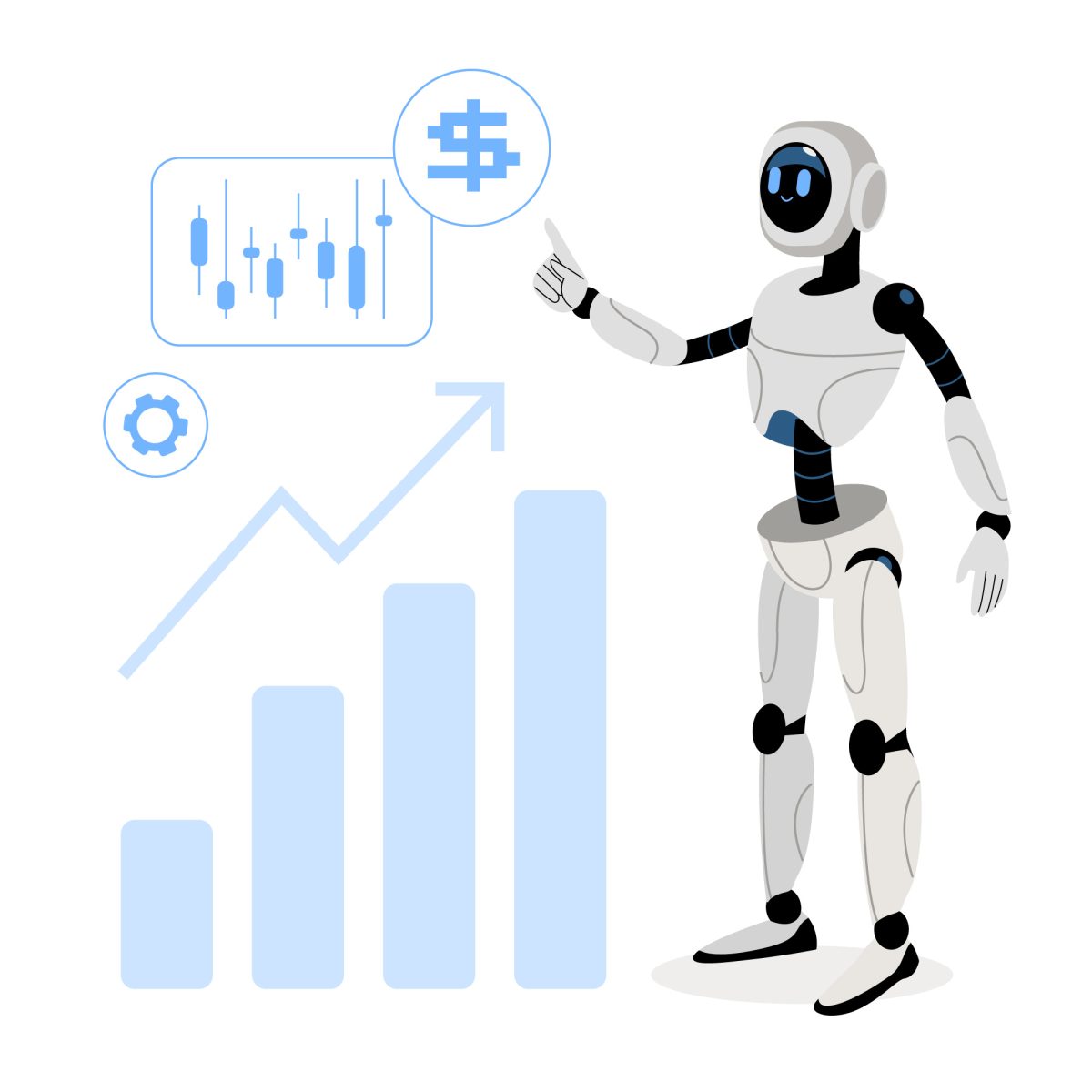Accurate demand forecasting is the backbone of successful business operations, influencing everything from inventory management to pricing and supply chain efficiency. However, traditional forecasting models often fall short due to their dependency on historical data and static assumptions. This is where AI in demand forecasting emerges as a transformative force, reshaping how businesses anticipate customer needs and respond to market dynamics.
In 2025, organisations across industries, from retail to manufacturing, are leveraging artificial intelligence to refine predictions, optimise resources, and reduce financial risks. AI doesn’t just forecast demand; it understands patterns, adapts to new data, and continuously improves. This blog explores what AI in demand forecasting is, its leading use cases, benefits, and why businesses can no longer afford to ignore its potential.
What is AI in Demand Forecasting?
AI in demand forecasting refers to the application of machine learning, deep learning, and predictive analytics to anticipate future product or service demand with greater precision. Unlike traditional models that rely solely on past sales data, AI integrates multiple real-time data sources, including market trends, customer behaviour, economic indicators, and even weather patterns, to generate more accurate predictions.
AI-driven forecasting models continually learn and adapt, providing valuable insights that enable businesses to plan production, refine marketing strategies, and optimise logistics. Whether predicting seasonal spikes or responding to global disruptions, AI brings agility and data-driven intelligence to every forecasting decision.
Use Cases of AI in Demand Forecasting
1. Retail and E-commerce Inventory Management
Retailers use AI in demand forecasting to predict which products will be in demand and when. AI algorithms analyse data from sales history, promotions, customer preferences, and regional trends to determine optimal inventory levels. This ensures that businesses avoid stockouts and overstocking, two critical issues that directly impact profit margins.
2. Supply Chain Optimisation
In logistics and manufacturing, demand forecasting powered by AI helps anticipate fluctuations in material requirements, transportation needs, and supplier timelines. By providing early insights into demand surges, companies can adjust their production schedules and distribution plans to maintain supply chain stability.
3. Food and Beverage Industry Forecasting
Perishable goods industries benefit immensely from AI in demand forecasting. AI systems predict consumption trends based on factors like weather conditions, festivals, and local events. This enables restaurants, grocers, and suppliers to minimise food waste while maintaining consistent product availability.
4. Energy Demand Forecasting
Energy providers use AI to forecast electricity and fuel consumption patterns. This supports better resource allocation, pricing strategies, and sustainable energy planning, particularly as renewable sources become more prevalent.
5. Fashion and Apparel Trends
Fashion brands rely on AI-driven forecasting tools to predict color preferences, fabric demands, and style trends. By analysing social media, search patterns, and purchase behavior, AI provides insights that guide design and production decisions, reducing waste and increasing profitability.
Benefits of AI in Demand Forecasting
1. Higher Forecast Accuracy
Traditional forecasting often relies on static data. With AI in demand forecasting, businesses benefit from continuous learning and self-improving models that integrate real-time data. This dynamic approach significantly enhances prediction accuracy, enabling organisations to make confident decisions.
2. Cost Reduction and Resource Optimisation
AI-driven insights allow companies to optimise stock levels, production schedules, and workforce allocation. This not only prevents overproduction and wastage but also improves cash flow and overall operational efficiency.
3. Improved Customer Satisfaction
Accurate demand predictions ensure that products are available when and where customers need them. AI-based forecasting reduces instances of out-of-stock products, leading to higher customer satisfaction and loyalty.
4. Agility in Changing Market Conditions
The global market is volatile, influenced by factors such as inflation, geopolitical changes, and unpredictable consumer behavior. AI in demand forecasting allows companies to respond swiftly to these changes, maintaining agility and minimising disruption.
5. Enhanced Collaboration Across Departments
AI insights bridge the gap between sales, marketing, production, and finance teams. With shared visibility into demand patterns, departments can align their strategies for maximum efficiency and better overall performance.
Challenges Businesses Face Without AI in Demand Forecasting
Businesses that rely solely on traditional forecasting methods encounter several operational and strategic challenges, including:
1. Data Silos and Inaccurate Predictions: Manual methods often fail to integrate cross-departmental or real-time data, leading to inaccurate projections.
2. Slow Response to Market Fluctuations: Without AI in demand forecasting, businesses lack the agility to adjust quickly to consumer demand changes or external disruptions.
3. Inefficient Inventory and Resource Management: Overstocking or stock shortages become common, directly affecting profitability.
4. Missed Growth Opportunities: Inaccurate forecasting limits businesses’ ability to identify emerging trends or customer preferences in time.
5. High Operational Costs: Inefficient planning leads to wasted resources, increased logistics costs, and poor decision-making.
How Stratpilot Empowers Smarter Forecasting
Stratpilot is designed to transform the way businesses approach forecasting and decision-making. By combining intelligent AI capabilities with an intuitive interface, Stratpilot helps organisations achieve precise, data-driven forecasts effortlessly.
Intelligent Forecasting Capabilities
Stratpilot integrates AI-driven forecasting models that analyse complex data sets in real time, giving businesses a clear understanding of future demand patterns.
Simplified Data Interpretation
The platform presents data insights in an easy-to-understand manner, helping decision-makers act swiftly without needing technical expertise.
Industry-Specific Forecasting Prompts
Stratpilot offers pre-defined AI prompts tailored to industries like retail, manufacturing, logistics, and finance, simplifying forecasting across different sectors.
Continuous Learning and Adaptation
As market trends evolve, Stratpilot continuously updates its models to maintain accuracy and relevance. This ensures businesses always have up-to-date insights for strategic planning.
By embedding AI in demand forecasting within its system, Stratpilot gives organisations the confidence to plan, allocate, and execute effectively, reducing risk and driving measurable business success.
Take your forecasting strategy to the next level. Request a demo for Stratpilot today and see how AI-driven forecasting can help your business make smarter, faster, and more profitable decisions.
Frequently Asked Questions (FAQs)
Q1: How accurate is AI-based demand forecasting compared to traditional methods?
AI-based forecasting models are significantly more accurate because they analyse both historical and real-time data, adapting to trends and changes as they happen.
Q2: Is AI in demand forecasting suitable for small and medium businesses
Yes. Small and medium-sized enterprises can use AI tools like Stratpilot to access scalable forecasting insights without the need for extensive infrastructure.
Q3: Can AI forecasting tools handle sudden market disruptions?
Absolutely. AI models continuously learn from evolving data patterns, allowing businesses to adjust strategies swiftly during unexpected events or market shifts.
Q4: How long does it take to implement AI-based demand forecasting
Implementation time varies depending on data availability and business size, but platforms like Stratpilot offer pre-configured solutions that enable rapid adoption.
Q5: Does AI in demand forecasting require technical expertise?
Not necessarily. Many modern AI platforms, including Stratpilot, are designed with user-friendly interfaces and guided prompts that make advanced forecasting accessible to all business users.





